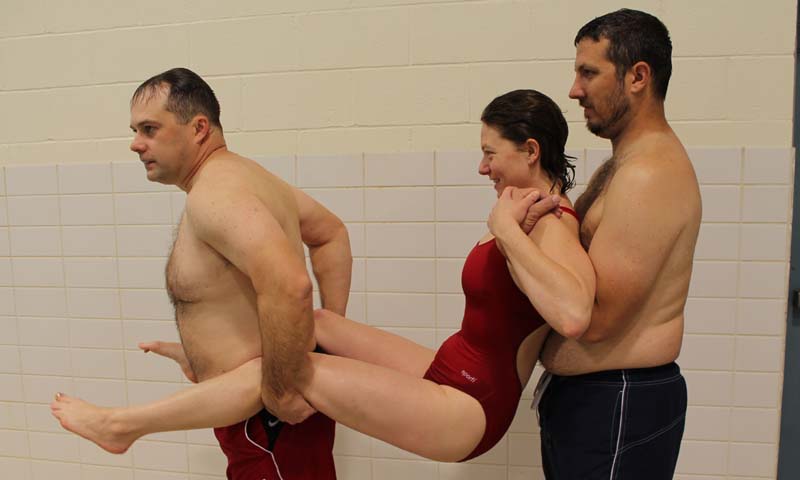![]() Assists are the most common help given to patrons and are best used for distressed swimmers who need assistance. As a reminder, a distressed swimmer can call out for help and may have some ability to swim. Assists are not normally used for active or passive drowning victims.
Assists are the most common help given to patrons and are best used for distressed swimmers who need assistance. As a reminder, a distressed swimmer can call out for help and may have some ability to swim. Assists are not normally used for active or passive drowning victims.
Swim Extension from Deck
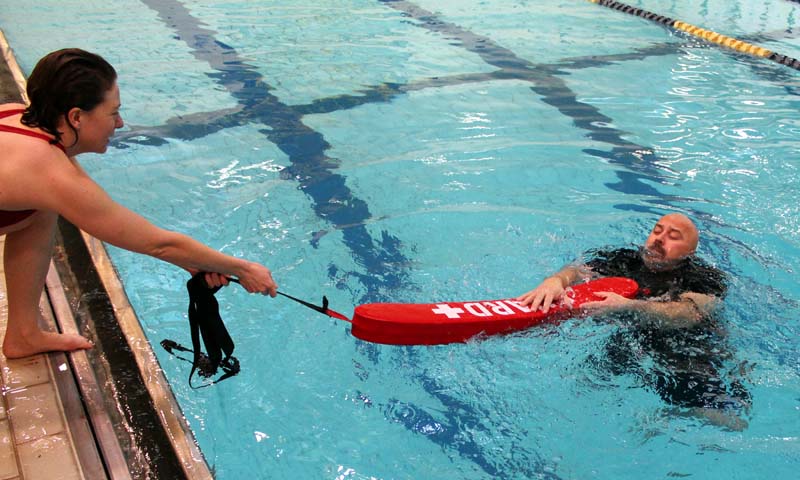 Hold the strap in one hand while extending the rescue tube to the victim with the other hand. The lifeguard should put as much weight as possible on the back leg and bring the victim to safety.
Hold the strap in one hand while extending the rescue tube to the victim with the other hand. The lifeguard should put as much weight as possible on the back leg and bring the victim to safety.
Extension with Equipment
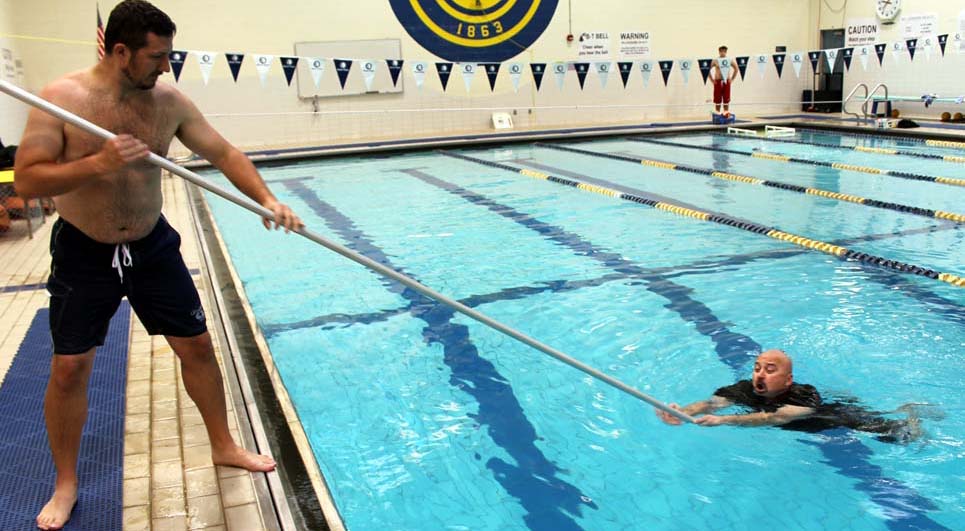 The lifeguard should position themselves to have a staggered stance with one foot in front and the other foot in back. Extend the shepherd’s crook to the victim and tell the victim to grab on. Slowly bring the victim to the wall by pulling the reaching pole hand-over-hand while leaning back to prevent falling into the water.
The lifeguard should position themselves to have a staggered stance with one foot in front and the other foot in back. Extend the shepherd’s crook to the victim and tell the victim to grab on. Slowly bring the victim to the wall by pulling the reaching pole hand-over-hand while leaning back to prevent falling into the water.
Swim Extension from in the Water
 Approach the victim from the front and extend the rescue tube. Tell the victim to grab the other end of the tube and bring them to the wall. A victim can help by kicking as the lifeguard brings the victim to the wall.
Approach the victim from the front and extend the rescue tube. Tell the victim to grab the other end of the tube and bring them to the wall. A victim can help by kicking as the lifeguard brings the victim to the wall.
Throwing Assist (Ring Buoy)
Not all pools are required to have a ring buoy if lifeguards are present. However, a ring buoy can be effectively used to reach victims that are farther than a lifeguard’s reach. Even though we have included this skill, we suggest if a victim is far enough away where a ring buoy is required, a lifeguard should just enter the water and perform a swim extension assist. The lifeguard should have the rescue tube with them anyway if performing surveillance duties.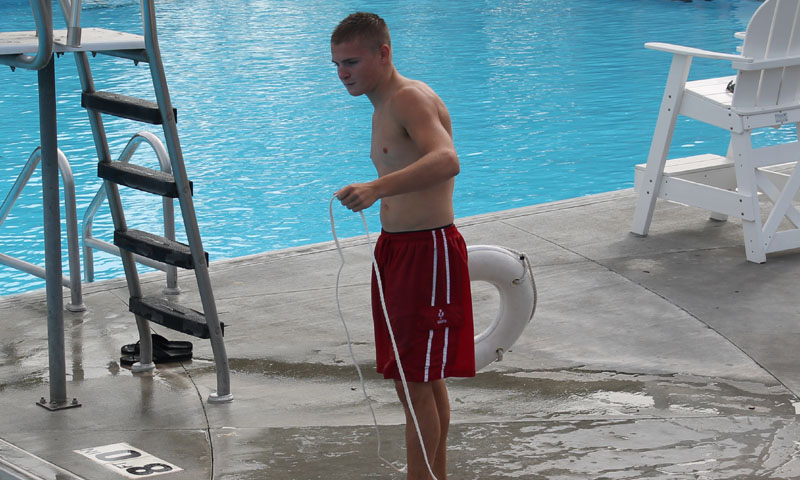
Hold the ring buoy with the dominant hand-with the other hand holding the line. With the throwing hand, bring your arm up so it is parallel with the water before swinging the ring buoy behind you. As the ring buoy is brought forward (underhanded), throw the ring buoy just beyond the victim, where the line is right next to or on one of the victim’s shoulders. Be sure to have a loose grasp of the line with your non-dominant hand when you throw the ring buoy. This will allow it to travel as far as necessary.
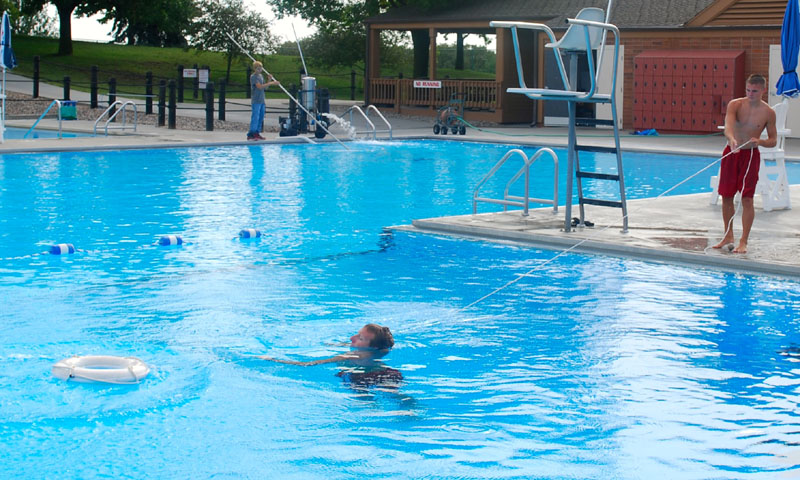 Once the ring buoy has been thrown, release the remaining line in your non-dominant hand. Slowly bring in the line, hand over hand, to where the victim can grab a hold of the ring buoy.
Once the ring buoy has been thrown, release the remaining line in your non-dominant hand. Slowly bring in the line, hand over hand, to where the victim can grab a hold of the ring buoy.
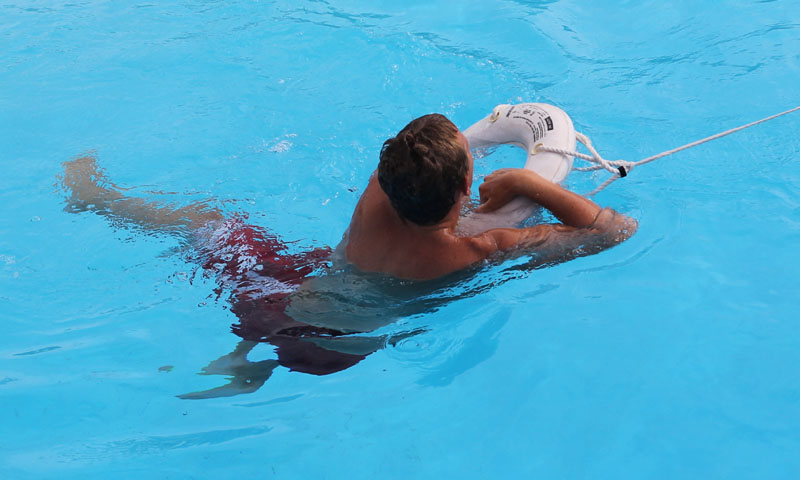 Once the victim grabs the ring buoy, reel them in. Keep your body low and lean back to avoid falling in the water.
Once the victim grabs the ring buoy, reel them in. Keep your body low and lean back to avoid falling in the water.
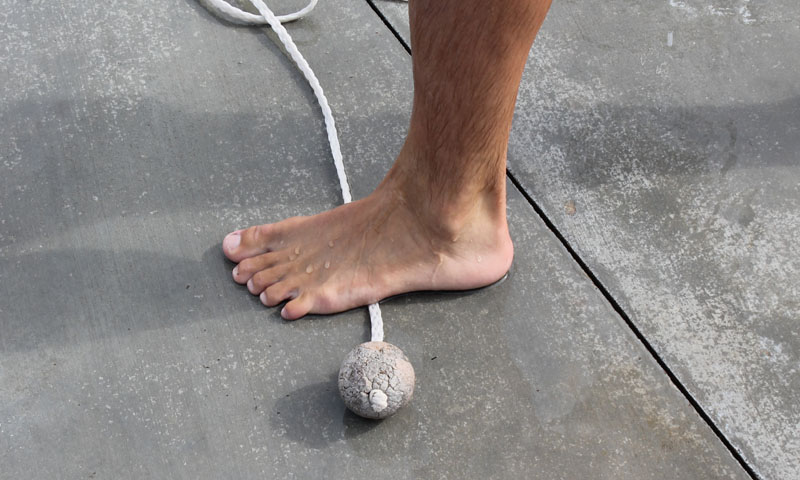
Notes:
- Make sure to place your foot on the end of the line for the ring buoy to prevent it from falling into the water.
- Be sure to secure the victim to the wall and help them out of the water.
Securing the Victim
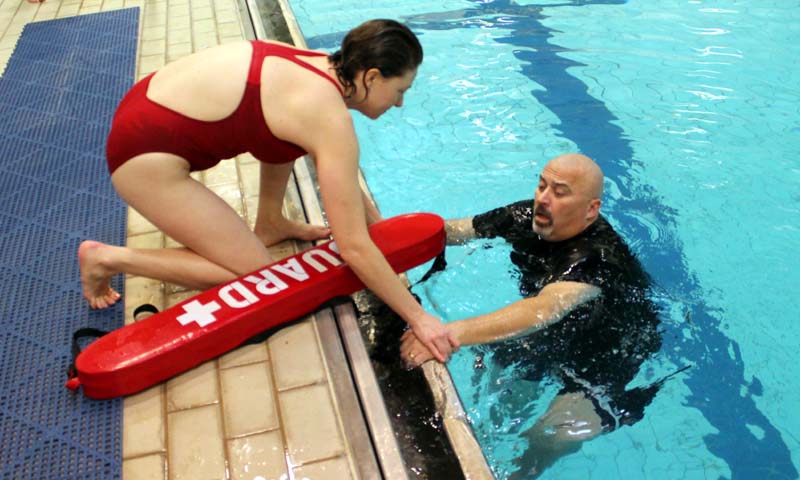
Anytime a victim needs help making it to the side of the pool during an assist, the lifeguard makes a point to grab the victim at a wrist and hold them to the wall so they do not slip away. If a victim cannot get out by themself, lifeguards should remove the victim using the non-spinal cord victim removal procedure.
Walking Assist
If a victim is having a hard time walking on their own, a walking assist can be used to get the victim to safety. This assist should be used on land or walking out of shallow water.
 Stand on the side of the victim and place the victim’s arm across the lifeguard’s shoulder. Support the victim by placing your arm across their waist with the other hand grabbing the victim’s forearm.
Stand on the side of the victim and place the victim’s arm across the lifeguard’s shoulder. Support the victim by placing your arm across their waist with the other hand grabbing the victim’s forearm.
Walking Assist (Two Rescuers)
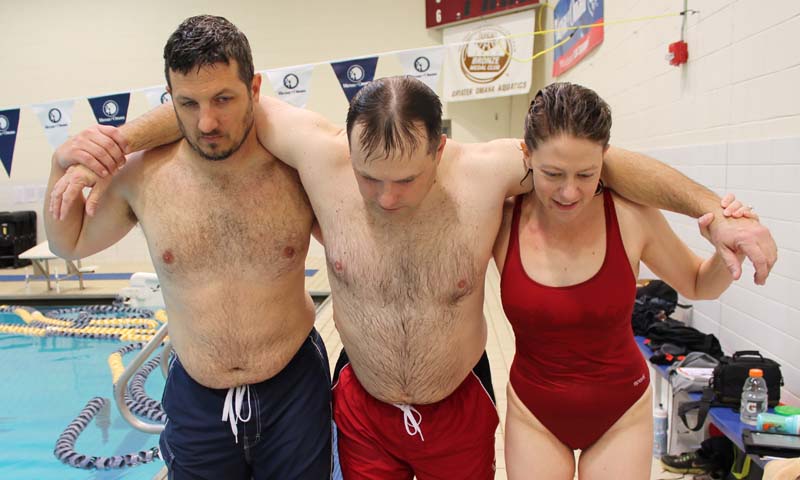 Similar to the single lifeguard assist, place each arm across the shoulder of each lifeguard. The lifeguards then place their arm across the victim’s waist, with their other hand holding the victim’s forearm.
Similar to the single lifeguard assist, place each arm across the shoulder of each lifeguard. The lifeguards then place their arm across the victim’s waist, with their other hand holding the victim’s forearm.
Two-Person Seated Carry
Beach Drag
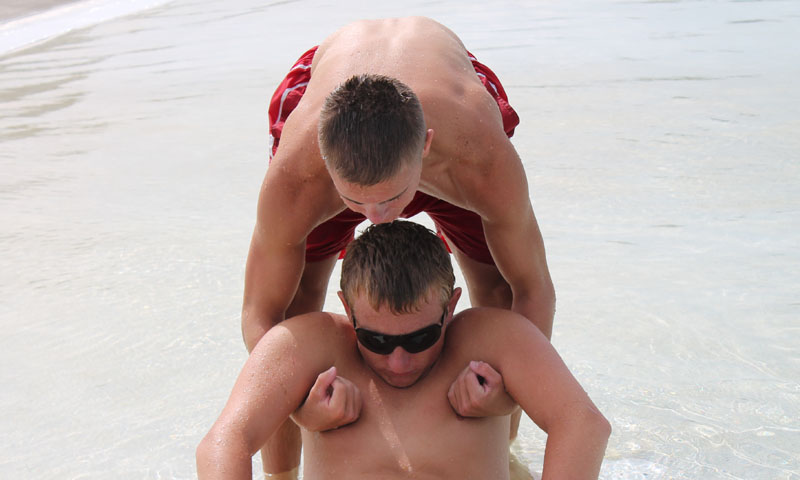 The lifeguard remove their rescue tube and positions his or her self behind the victim. Next, grab the victim underneath their armpits. The lifeguard should attempt to support the victim’s head with their forearm as much as possible. Once set, the lifeguard walks backwards until the victim shoulders clear of the water when placed back on the ground.
The lifeguard remove their rescue tube and positions his or her self behind the victim. Next, grab the victim underneath their armpits. The lifeguard should attempt to support the victim’s head with their forearm as much as possible. Once set, the lifeguard walks backwards until the victim shoulders clear of the water when placed back on the ground.
 This skill can be used with two lifeguards where each lifeguard grabs underneath the victim’s armpits and supports the victim with their other hand.
This skill can be used with two lifeguards where each lifeguard grabs underneath the victim’s armpits and supports the victim with their other hand.
Notes:
To prevent injury, lifeguards should use their leg strength to move the victim and avoid putting pressure on their back.

